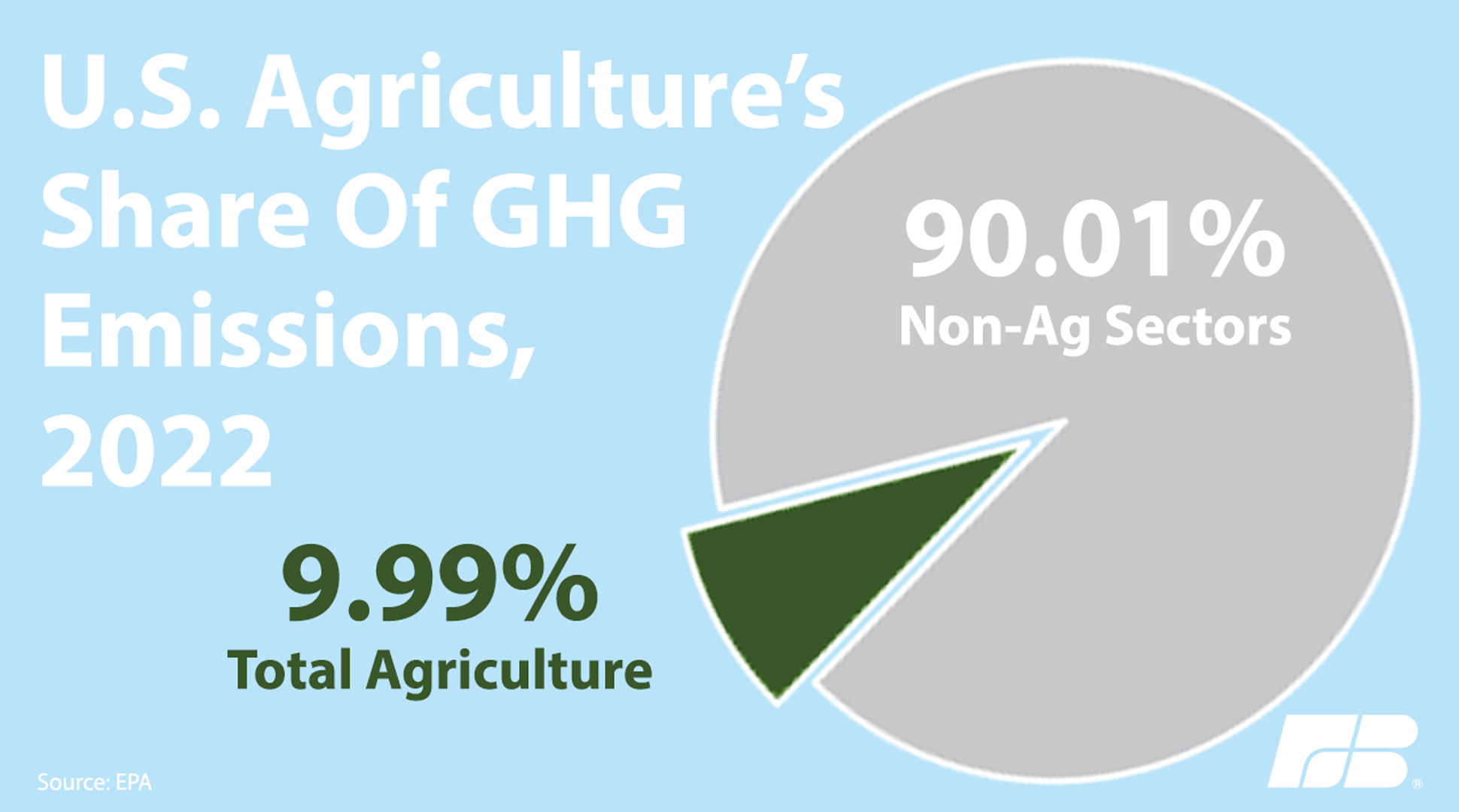Think farming and ranching are huge contributors to greenhouse gas emissions? Think again! Conservation efforts and market-based incentives are helping agriculture reduce its greenhouse gas emissions, according to the EPA.
According to Danny Munch, American Farm Bureau Federation Economist, new data released this month from the Environmental Protection Agency shows agriculture decreased its greenhouse gas emissions in 2022. The EPA recently released the Inventory of U.S. Greenhouse Gas Emissions and Sinks: 1990-2022.
“Overall greenhouse gas emissions from all sources increased by 1.3 percent between 2021 and 2022, though agricultural emissions dropped 1.8 percent, and that’s the largest decrease of any economic sector,” Munch explained.
2022 marks the lowest U.S. agricultural greenhouse gas emissions since 2012. The EPA categorizes agricultural emissions by crop cultivation, livestock and fuel combustion that occurs in the industry.
“Crop cultivation emissions were down six million metric tons from 2021,” Much said. “When we look at livestock, they were down 2.1 percent, or six million metric tons from 2021. Emissions from fuel combustion in ag were down one million metric tons, or 1.2 percent.
And there’s even more good news. The data also shows productivity gains in agriculture far outpace population growth.
“While the U.S. population has grown by over 80 million since 1990, per capita agriculture emissions have dropped 20 percent, and when you adjust that for total productivity gains, it drops to 25 percent over the 20-year period,” Munch said.
In other words, farmers and ranchers are doing more with less and are the best symbol of sustainability in our country today.
